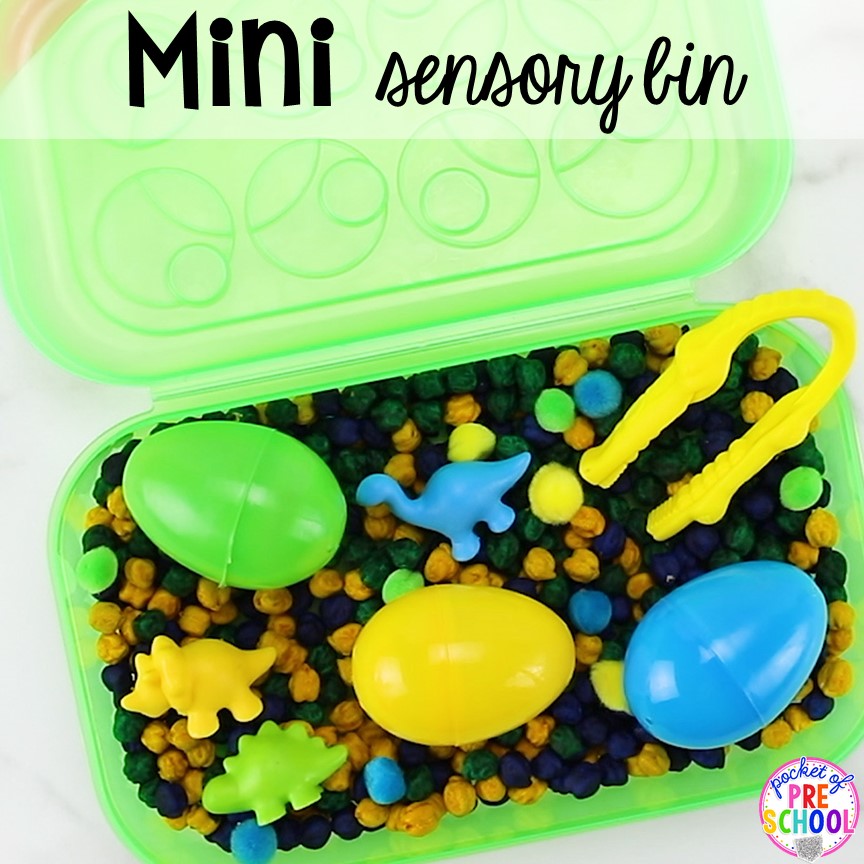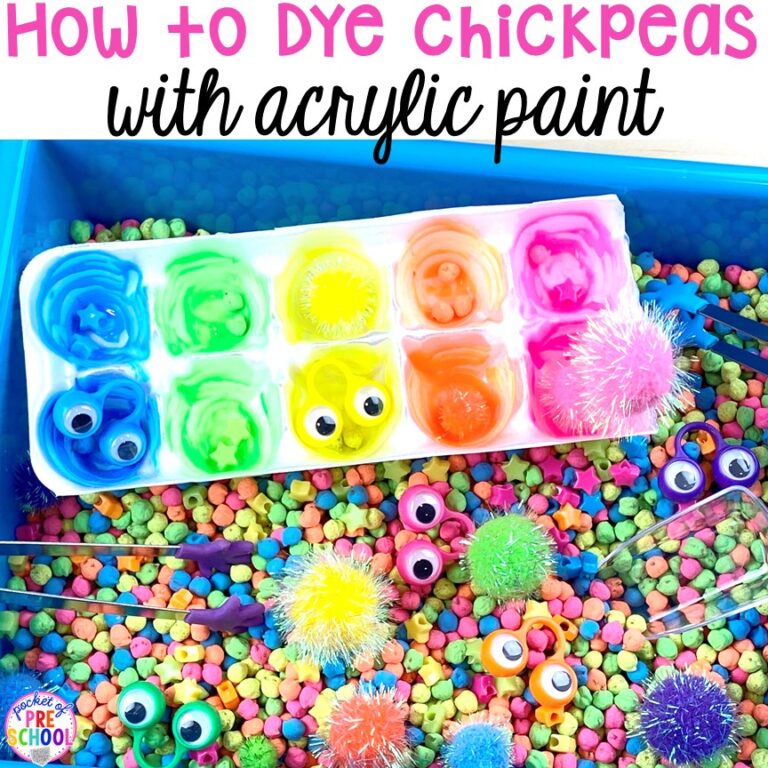
Chickpeas are such an amazing sensory bin filler! And, BONUS…they are super easy to dye. I’m going to show you how simple it is to dye chickpeas (aka garbanzo beans) and create a color-matching sensory bin that your little learners will love. Chickpeas are small but perfect for those little fingers to pick up, scoop, pour, and run through their fingers to explore texture. Since they are small, they also help students strengthen those fine motor and pencil grasp muscles.
Making a sensory bin in a pencil box is perfect for individual students and take home bags. With the new COVID guidelines, these would be perfect for making individual sensory bins. You can also use these suggestions to fill the sensory table in your classroom.
*This post contains referral links at to cost to you. This means if you click on a link, I earn a tiny commission.
How to Dye Chickpeas

WHEN YOU FOLLOW THESE STEPS, YOU WILL HAVE GORGEOUS, DYE CHICKPEAS IN NO TIME.
It’s so simple!
Step 1: Place chickpeas in a thick baggie. If you are making small batches, use sandwich-size bags. If you are making a big single color batch, use a gallon baggie. Any cheap chickpeas or garbanzo beans will do. I used these chickpeas from Amazon.
Step 2: Add liquid watercolor and close the baggie. Just a few squirts will do. You can also use acrylic paint instead of liquid watercolor if you want, and just follow the same steps below.
Step 3: Shake, shake, and shake! Massage the color into the chickpeas. This is the fun part that students can help with! If the color isn’t bright enough for you, just add a few more drops of liquid watercolor.
Step 4: Grab a tray and cover with wax paper or foil. Spread the dye chickpeas on the tray and let them dry completely.

***Let the dye chickpeas air dry for 24-48 hours before you place in an airtight container. This ensures that all the moisture is out of the chickpeas. Once they are dry, place the bright, colorful chickpeas into a pencil box or bin of your choice. Add the fun stuff like tweezers , matching colored dinosaur counters, pom poms, and plastic eggs. Students can sort the chickpeas, pom poms, and counters into matching colored eggs.

Be intentional with sensory play, and you can sneak in so many math and literacy skills! As they play and sort, they will also be strengthening their fingers and wrists, which students need when they write and draw.
If you want to make a big batch of colored chickpeas, simply place them in a gallon baggie. This is perfect if you are making them for a bunch of mini sensory bins or the big sensory table in your classroom.

If you are making individual student supplies, grab these Editable Student Supply Labels from my TpT store here. I like to color-code each student to help organize all the things. If you have a big class, you may have four or five students that have blue supplies, and that’s OK. It will still be easier to find the blue notebook with the letter “J” or “Jude” because there will only be 5 blue notebooks rather than 20 if every student has the same color.
If you want more ideas for sensory play, check out these posts by clicking on the photo!

Check out this video for how to dye chickpeas here.
Love this post about how to dye chickpeas? Pin it!

hey, i’m jackie!
I’m Jackie, your go-to girl for early childhood inspiration and research-based curriculum.






















